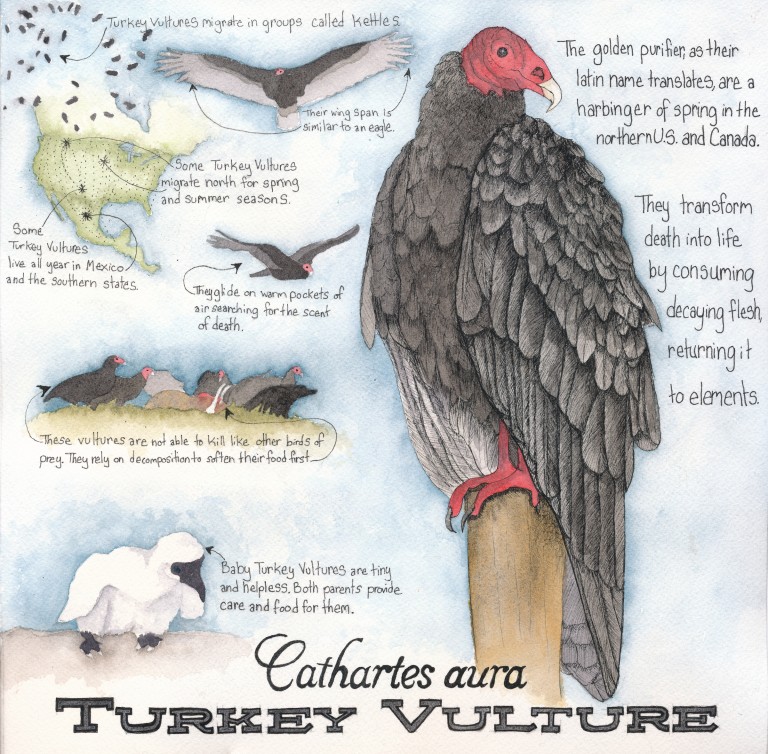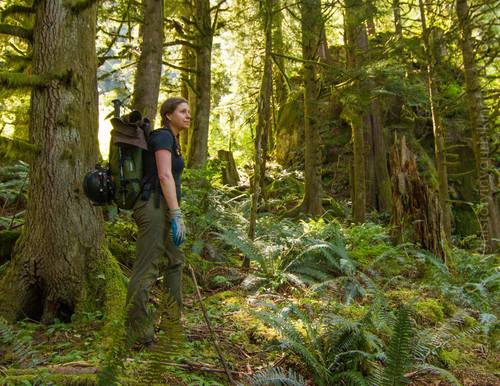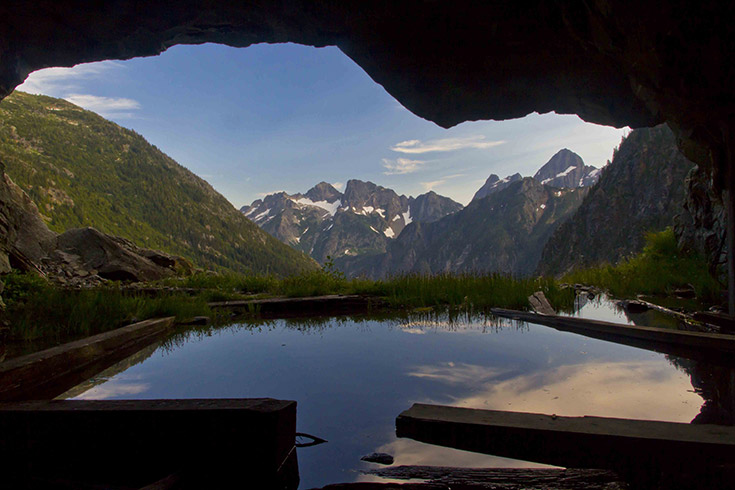GOLDEN PURIFIER

Park Ranger Julie Stonefelt and her husband Kevin Mack, an animal cop, fell in love while returning a once-injured Bald Eagle back to the wild. No surprise then, that they spend their downtime together unearthing all that the natural world has to offer in adventure form–from long-abandoned ghost towns to an expansive network of mining tunnels lurking beneath decades of foliage.
After coming to the realization that a navigational and informational resource didn’t quite exist in the way they’d like to see it- the two created Exploring History in Your Hiking Boots– an online guide that provides insight and inspiration for those looking to immerse in the beauty and hidden history that the surrounding terrain has to offer.
Julie enlightens above with her beautiful hand-drawn field note documenting the oft-misunderstood habits of the Turkey Vulture (or the more poetic Golden Purifier as their Latin name translates), and below with a Q & A.
Q & A with Julie Stonefelt
What makes Turkey Vultures the harbingers of spring?
Turkey Vultures are year-round residents in Central and South America, but in the Pacific Northwest where I live, they only spend spring and summer. They often return very early, before other birds are singing or flowers are blooming. So even if it’s still very dark, when I see those big black wings in the sky, I know the light will be returning soon.
Vultures tend to have kind of a bad rap. What can you share with people that will help them see another side of these misunderstood creatures?
Thank you for asking! It’s true, they do get a bad rap, especially in the Americas. I think it’s our culture so afraid of death. Vultures are often associated with it.
In other parts of the world the connection between vultures and death is seen as a sacred role.
Tibet Buddhists practice sky burial, where the dead are placed in the open so vultures can consume the remains. In India a similar tradition is practiced, and they believe vultures help release the soul from the body.
Turkey Vultures are one of they very few birds that have a sense of smell. They also have large wings. They combine these attributes by gliding from one thermal (warm columns of air rising from the earth) to another while scenting the air for food.
There are no dead-beat dads in the Turkey Vulture community. Both parents share an equal role in raising their young.
What inspired you and Kevin to start Exploring History in your Hiking Boots?
In my day job I’m a Park Ranger. My husband Kevin Mack was a wildlife biologist for 22 years, but when he became an animal cop, his schedule changed. In the first year we had very little time off together so we decided to make the most of it. We wanted to find hikes that took us to cool places, but weren’t too busy, since we both spend our days working with the public in park settings.
We found there are a lot of interesting places out there, but most have been almost forgotten, so just finding them is an adventure. After a few bad trips and lots of complaining, we realized we create the resource we wished existed. Exploring History in your Hiking Boots was born.
Traversing so much of the natural landscape- you must come across some pretty interesting / psychedelic stuff. Can you share with us a few highlights?
We spend most of our free time off the beaten path for Exploring History in your Hiking Boots so we have had some amazing experiences. The most unexpected experience has been finding mine tunnels. Through our research on ghost towns, we discovered that the Cascades were full of small company towns dedicated to digging metal from the ground. While the towns are mostly gone, the tunnels never went away.
We’ve hiked miles into the forest and found tunnels thousands of feet long.
Some still have ore carts inside. But instead of miners they are now visited mostly by frogs, raccoons, and sometimes even bears and mountain goats.
Top 5 things to bring on a nature adventure this summer:
For those that are just getting started with hiking and adventuring, we recommend you thoroughly read the Adventuring 101 section of Exploring History in your Hiking Boots.
1. A buddy – I love solitude, but hiking alone is just way too dangerous. I once dislocated my hip on backpacking trip, and thank goodness I had someone to carry my pack while I limped 5 miles back to the car. If you don’t have someone in your life with the same interest, find a store or club that does a hiking group.
2. A plan – You are unlikely to get cell phone reception, so know where you’re going and how to get there. Also make sure you have designated a check-in person so they can call the cavalry if you get lost or injured.
3. Water purification – Hydration is essential, so drink plenty of water and have a way to get more along the trail. Mountain streams may look pristine, but bacteria are usually microscopic. You don’t want to take home any souvenirs.
4. Snacks – It takes a lot of energy to walk up a mountain, so this is the time to eat your heart out. Bring extra in case your trip is longer than you expected.
5. Emergency gear – Be prepared in case everything goes wrong and you have to spend the night on a mountain before the local Search and Rescue team finds you.
Black Warrior Mine, North Cascades
Where will your summer adventures take you?
We always have a long list of places we want to visit. We try to visit sites that will be accessible for a wide variety of people, but this summer we are planning a couple epic trips. The one I am most excited about is a multi-day backpacking trip to Pelton Basin in the North Cascades.
The Black Warrior Mine is located in jaw-dropping-gorgeous valley above 4,000 feet.
We are also working on a treasure hunt of sorts for a future edition of Unified Field Collective. Stay tuned!

